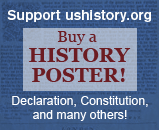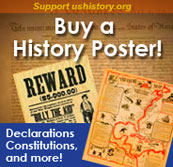9c. The Boston Patriots

Boston was the home for many patriots and supports of the American cause. This map shows the plan of Boston in 1775, at the height of the Revolution.
The American Revolution was not simply a series of impersonal events. Men and women made fateful, often difficult decisions that led to the great clash.
Although patriots could be found in any of the 13 colonies, nowhere were they more numerous than in the city of Boston.
Perhaps the prevalence of shipping in Boston made Bostonians especially resent the restrictions on trade. Maybe its legacy of religious quarrels with the Church of England made Bostonians more rebellious. Its long history of town meetings and self-rule may have led New Englanders to be more wary of royal authority.
Perhaps a combination of these and other factors led the city of Boston to be the leading voice against British authority. It was, after all, the Boston Massacre and the Boston Tea Party.
Furthermore, fierce patriots such as James Otis, Samuel Adams, John Adams, John Hancock, and Paul Revere were all citizens of one great city: Boston.
James Otis
Quick-tempered James Otis was one of the first vociferous opponents of British taxation policies. As early as 1761, Boston merchants hired him to provide legal defense against British search warrants.
His widely distributed pamphlet, The Rights of the British Colonists Asserted and Proved, was one of the first legal criticisms of Parliament's taxation policies. A large man with a large heart for British liberties, he was perceived by many in London to be the center of treasonous American activity.
But Otis also saw himself as fiercely loyal to the English Constitution. Once he stormed into Boston's Royal Coffee House to face drawn swords because his loyalty had been called into question. Violence ensued. Otis was so severely beaten that he never really recovered. The wounds he received from British made him somewhat of a martyr around Boston.
Lightning Strikes
Otis was never the same mentally after the severe beating. Friends and admirers commented about his diminished verbal capacities.
Of Otis, John Adams wrote, "In short, I never saw such an object of admiration, reverence, contempt, and compassion, all at once, as this. I fear, I tremble, I mourn, for the man and his country; many others mourn over him, with tears in their eyes." Poor Otis!
In May, 1782, Otis was killed after being struck by a bolt of lightning.
Samuel Adams

Samuel Adams was perhaps the fieriest supporter of American liberty in the 13 colonies. His mind drew a sharp distinction between the evils of the British Empire and simple American life. His skills as a political organizer drove the colonies toward declaring independence. Adams chaired the Boston town meeting that preceded the infamous tea party.
Rather unsuccessful in a series of pursuits prior to the Revolution, Adams found his calling in organizing and rabble-rousing. He served as an active member of the Sons of Liberty and the creator of the first significant committee of correspondence. As the Revolution approached, the cries for Adams' head grew louder and louder in the streets of London.
|
The Destruction of the Tea is the pretence for the unprecedented Severity shown to the Town of Boston but the real Cause is the opposition to Tyranny for which the people of that Town have always made themselves remarkeable & for which I think this Country is much obligd to them. They are suffering the Vengeance of Administration in the Common Cause of America. – Samuel Adams, letter to Arthur Lee (January 25, 1774) | ||
John Adams
John Adams, Samuel's second cousin, was no less a patriot. His early fame as a defense attorney for the British soldiers in the trial that followed the Boston Massacre cannot be taken in isolation.
He provided the wording of the resistance message sent to George III that was adopted by the First Continental Congress. John and Samuel Adams represented the radical wing of the Second Continental Congress that demanded a taking up of arms against Britain. John Adams was also a member of the committee of five who drafted the Declaration of Independence.
John Hancock
The man with the famous signature — John Hancock — was also a Bostonian. Hancock earned the early ire of British officials as a major smuggler. The seizure of one of his ships brought a response from Bostonians that led directly to British occupation in 1768.
Later, Hancock and Samuel Adams were the two agitators whose arrest was ordered by General Gage after the battles at Lexington and Concord. As a man of great wealth, he had much to lose by resisting Britain. Nevertheless, he did not bend.
Paul Revere
Paul Revere did not come from the same social class as the aforementioned patriots. As a silversmith, he was a man of humbler means, but his attitudes about Britain were anything but humble. His famous midnight ride that warned of the advancing British troops was only one of his revolutionary actions. He was also an illustrator, whose image of the Boston Massacre became iconic.
|
I set off, it was then about 11 o'clock, the moon shone bright. I had got almost over Charlestown Common, towards Cambridge, when I saw two officers on horse-back, standing under the shade of a tree, in a narrow part of the road. I was near enough to see their holsters and cockades. One of them started his horse towards me, the other up the road, as I supposed, to head me, should I escape the first. I turned my horses short about, and rode upon a full gallop for Mistick Road, he followed me about 300 yards, and finding he could not catch me, returned. I proceeded to Lexington, through Mistick, and alarmed Mr. Adams and Col. Hancock ... – Paul Revere, account of his ride (1775) | ||

When the British suspended the Massachusetts legislature for refusing to retract its circular letter, Revere engraved the names of the 92 assemblymen who stood up to Parliament. His engravings were used by patriots as anti-British propaganda, particularly his famous engraving of the Boston Massacre.
These five were but a handful of Bostonians who became the thorn in the British side. Their brave actions encouraged American patriotism throughout the 13 colonies. As the American Revolution was dawning, the Boston patriots led the way.







